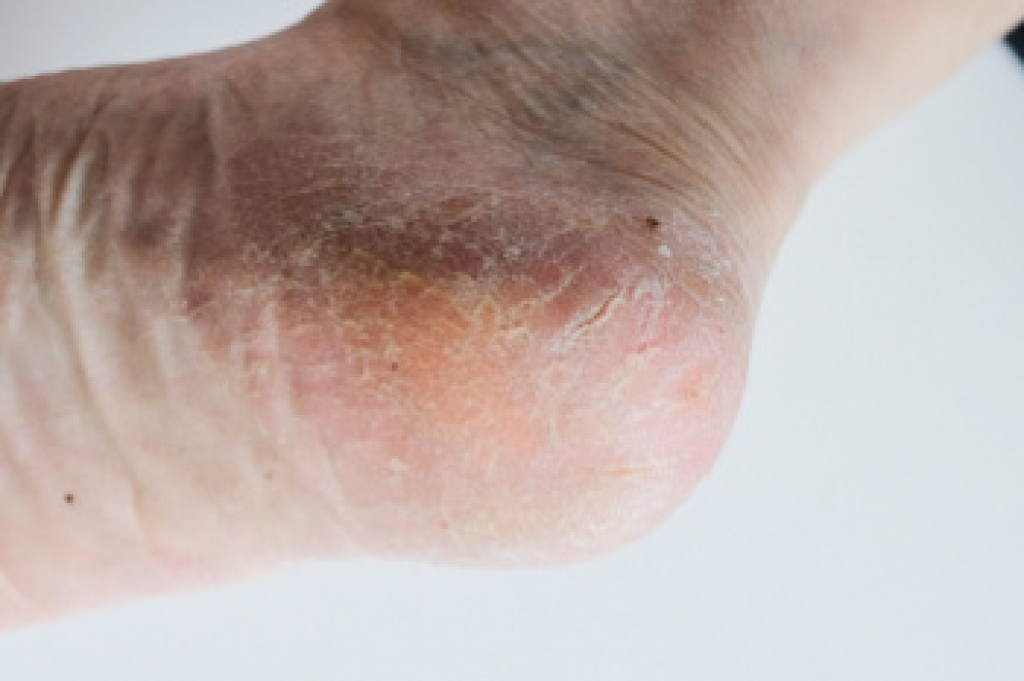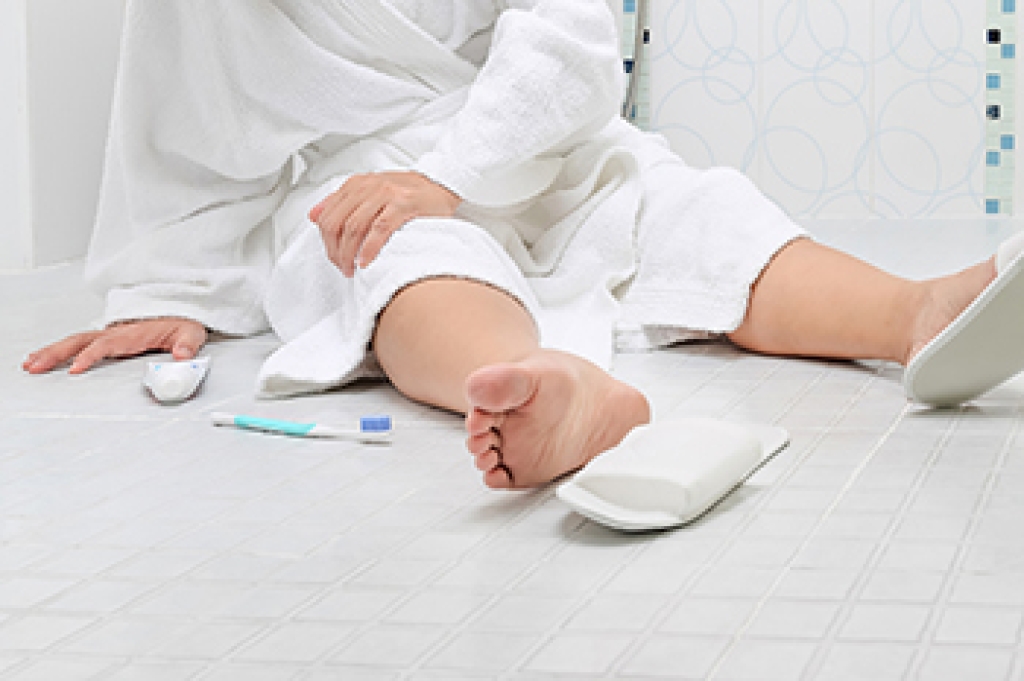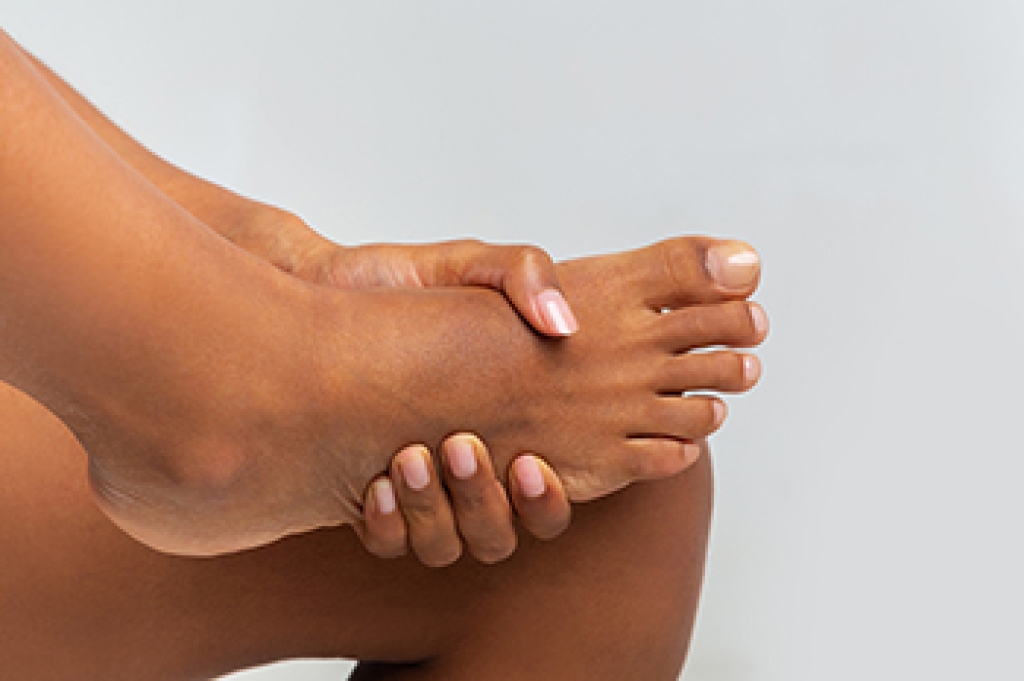What Causes Cracked Heels?

Cracked heels develop when the skin surrounding the heels becomes dry, thick, and splits due to pressure or lack of moisture. Common causes include zinc or omega 3 vitamin deficiency, dry skin, diabetes, being overweight, fungal infections, and certain skin diseases. These factors can reduce skin elasticity and healing ability, leading to painful cracks or fissures. Symptoms include rough, flaky skin, redness, bleeding, and tenderness when walking. A chiropodist can safely remove thickened skin, treat any underlying infection, and recommend moisturizing creams or custom orthotics to reduce pressure on the heels. Regular professional care and proper foot hygiene can restore comfort and prevent recurrence. If you are struggling with cracked heels, it is suggested that you schedule an appointment with a chiropodist who can offer effective relief and treatment techniques.
Dry, cracked heels are more than a cosmetic inconvenience. For many people, they are uncomfortable, deep, painful, and may even bleed. If you suffer from cracked heels, please consult with one of the chiropodists from The Footcare Centre. Our chiropodists can help you maintain the health of your lower limbs and your mobility.
Causes
- Prolonged standing
- Wearing open-back shoes
- Wearing shoes that don’t cushion the heels
- Living in a cold or dry climate
- Taking long, hot showers
- Not moisturizing the heels
- Eczema
- Psoriasis
- Palmoplantar keratoderma
- Juvenile plantar dermatosis
Treatments
- Soaking the feet
- Exfoliating with a pumice stone
- Moisturizing the heels
- Wearing closed-back shoes that cushion heels
- Avoiding prolonged standing
- Taking warm, rather than hot, showers
- Treating underlying skin conditions
While milder cases of cracked heels can be treated at home, some patients present with deep, painful, bleeding heel fissures that are at risk of becoming infected and may require medical care. Additionally, patients with diabetes or any other conditions that affect the immune system should be monitored by a chiropodist.
If you have any questions, please feel free to contact our office located in . We offer the newest diagnostic and treatment technologies for all your foot care needs.
Causes of Falls in Seniors at Home

Falls among seniors can lead to serious injuries that affect their independence and quality of life. Among the factors contribute to falls are poor balance, diabetes, arthritis, thyroid disorders, and loss of muscle mass. These conditions can weaken the legs and feet, making it difficult to stay steady while walking or standing. Improving muscle strength through gentle exercise, wearing supportive footwear, and keeping the home clutter-free can help reduce the risk of falling. A chiropodist can treat various foot and ankle conditions, assess foot health, recommend custom orthotics, and provide advice to improve stability and mobility. If you or a loved one have fallen and are struggling with balance or foot pain, it is suggested that you schedule an appointment with a chiropodist who can offer you treatment and guide you on effective falls prevention tips.
Falls are a common but preventable problem for older adults. If you would like to learn more about preventing falls, please consult with one of the chiropodists from The Footcare Centre. Our chiropodists can help you maintain the health of your lower limbs and your mobility.
Did you know that most falls occur in the home? Fortunately, there are many simple changes that you can make to the living environment to reduce the risk of falling.
In the Bathroom:
- Install grab bars near toilets, bathtubs, and showers
- Put non-skid mats on all surfaces that may get wet
In the Bedroom:
- Keep a light near the bed so that you can easily turn it on if you have to get up at night
- Keep the path from your bedroom to the bathroom clutter-free and well-lit
- Consider installing a bed rail for added support
In the Kitchen:
- Use non-skid mats
- Wipe up any spills immediately
- Move commonly used items to areas that are easily within your reach
In the Hallways:
- Place handrails on both sides of the stairs
- Install good lighting in the hallways and around the entire home
- Keep hallways free of clutter
- Don’t use throw rugs or small area rugs
In Other Living Areas:
- Keep loose cables, cords, and wires near the wall and away from walking surfaces
- Make sure that all carpets and rugs are secure firmly to the floor
- Arrange your furniture so that it is not in your way when you walk
- Use chairs and couches that you can easily get up from
If you have any questions, please feel free to contact our office located in . We offer the newest diagnostic and treatment technologies for all your foot care needs.
Causes of a Lump on the Side of the Foot

A lump on the side of the foot can be caused by several conditions that require attention. Bursitis develops when fluid filled sacs that cushion the joints become inflamed, often leading to swelling and tenderness. Cysts may also appear as soft or firm lumps that can cause discomfort in shoes. Sprains or repetitive stress injuries may create localized swelling that feels like a lump. A chiropodist can assess the cause through examination and imaging, provide relief with custom footwear or orthotics, and recommend treatment to reduce pain and prevent recurrence. If you notice a lump on your foot, it is suggested that you promptly consult a chiropodist for an accurate diagnosis and effective treatment solutions.
Foot pain can have many causes. To receive an accurate diagnosis and treatment for your foot pain, please consult with one of the chiropodists from The Footcare Centre. Our chiropodists will assess your condition and provide you with quality foot and ankle treatment.
Causes
There are a variety of different conditions that can cause foot pain, including:
- Plantar fasciitis
- Deformities, such as bunions or hammertoes
- Injuries to the muscles, bones, tendons, or ligaments in the feet
- Arthritis
- Flat feet
- Ingrown toenails
Symptoms
The type and location of your foot pain can help determine what may be causing it and what type of treatment options are best for you.
Common types of foot pain include:
- Heel pain
- Arch pain
- Toe pain
- Ball of foot pain
- Pain that has a stabbing, burning, or tingling quality
- Pain that is constant, intermittent, or that gets better or worse depending on the situation
Diagnosis
A thorough medical history and physical examination of your feet will be required to determine a diagnosis. Imaging studies, such as X-rays or MRIs may be performed to rule out or confirm certain diagnoses.
Treatment
Treatment will depend on the cause of the pain. Common treatments for foot pain include resting, icing, compressing, and elevating the affected foot, wearing orthotics, or taking anti-inflammatory medications.
If you have any questions, please feel free to contact our office located in . We offer the newest diagnostic and treatment technologies for all your foot care needs.


